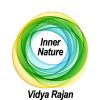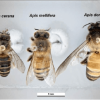Inner Nature: Gene Snatcher

By Vidya Rajan, Columnist, The Times
In an earlier article[1] I wrote about tardigrades, a ubiquitous and indestructible animal with an extraordinary ability to endure adverse environmental conditions. This superpower is assisted by their entry into a dormant state called “tun”, in which they lose all their water and curl up into a husk. Tardigrades in the tun state can be subjected to boiling,...
Inner Nature: Forces of Nature

By Vidya Rajan, Columnist, The Times
The story so far: The hot, dense singularity that was the source of the Big Bang exploded about 13.8 billion years ago (bya) and the energy in the explosion spread, cooled and became lumpy. The lumps were matter (~5%), dark matter (~25%), and dark energy (~70%).
To break it up into timelines after the instant of the Big Bang (A.B.B.):
Inner Nature: The current understanding of the nature of our universe

By Vidya Rajan, Columnist, The Times
The Big Bang was an explosion of immense power at a point in space about 13.7 billion years ago; the singularity from which everything in this universe – energy, space, time, matter – originated. Consensus on the universe’s origins from a fiery explosion emerged because of one incontrovertible signature that it left behind: a little bit of the heat from the...
County Science Research Competition winners celebrated at awards ceremony

The students pictured won Best of Division for C Division (grade 10) in the Dr. Lucy Balian Rorke-Adams Fair. From left to right: Aman Yelampalli of Avon Grove Charter School, Rithik Kamtam of Downingtown STEM Academy, and Sruthi Desikan of Downingtown STEM Academy.
On Tuesday, March 19, students in grades 6-12 from across Chester County gathered at the Technical College High School (TCHS) Brandywine...
Inner Nature: Merde!

By Vidya Rajan. Columnist, The Times
Merde. In other words, s**t, p**p, d**g, number 2, BMs, excreta, droppings, stools, feces. This is not a really pleasant subject of conversation, or even a polite one (unless you lived back in the eighteenth century when everyone was apparently fascinated by it as an indicator of health). But it’s an important part of life. If you’ve ever been constipated or...
Inner Nature: Cannibalism – proscribed or protein?

By Vidya Rajan, Columnist, The Times
Expose a young mouse mother to a stressful stimulus – say a sudden loud noise – and she may eat her own pups. Rough for the young. But what turns a mother from nurture to cannibalism in an instant? Bees will also eat their young – younger larvae first – under some circumstances ([1]). And humans too. Why do they do it?
Cannibalism, which is the consumption...
Inner Nature: The need for sleep

By Vidya Rajan, Columnist, The Times
The death-like appearance of sleepers has fascinated people for millennia; death is even euphemistically called “eternal sleep”. But why do we and other animals need sleep? A good night’s sleep is considered a key to a clear head, and most of us sleep between 6 and 8 hours. But some notoriously high achievers, including Leonardo da Vinci Nikola Tesla, and...
Inner Nature: Rock honeybee encounter in Chennai, India

By Vidya Rajan, Columnist, The Times
I am currently in India. My father lives in Chennai, a city on the southeast Bay of Bengal coast, in a flat (apartment) in a tower block. Recently a swarm of honeybees showed up and settled on a large waterpipe that ran above a public stairwell. Anxious that passersby would get stung, a decision was made by the maintenance crew to call in pest control. A previous...
Inner Nature: Shapes of animal bodies

By Vidya Rajan, Columnist, The Times
The study of animal form and function is both illuminating and fascinating, panning from simple to complex forms. The morphing started 750-odd million years ago. At this time, the Earth was not young by any means! It was already about 3.5 billion years old (80% of its age today, which is about 4.3 billion years old) and populated by cyanobacterial mats, and single-celled...
Inner Nature: Inosculation

By Vidya Rajan, Columnist, The Times
I was taking a walk the other day (in a tropical country) and came across limbs from two trees that had twisted around each other and had actually grown into each other, presumably sharing their vasculature at the point of contact. These kisses are termed inosculation. It happens when the bark between the abutted limbs wears away due to friction and the vascular...


